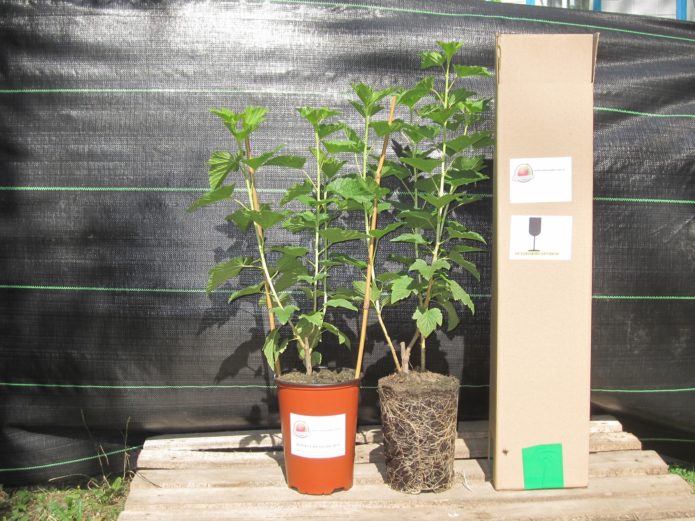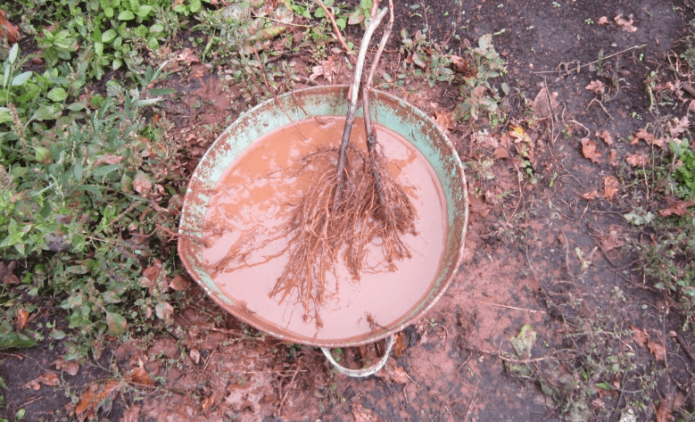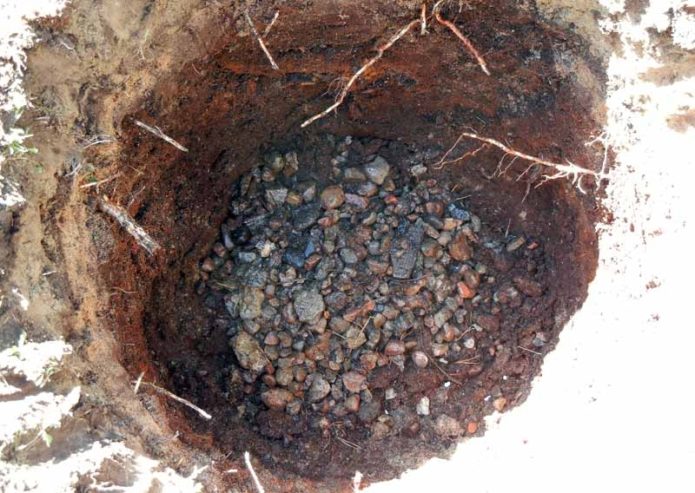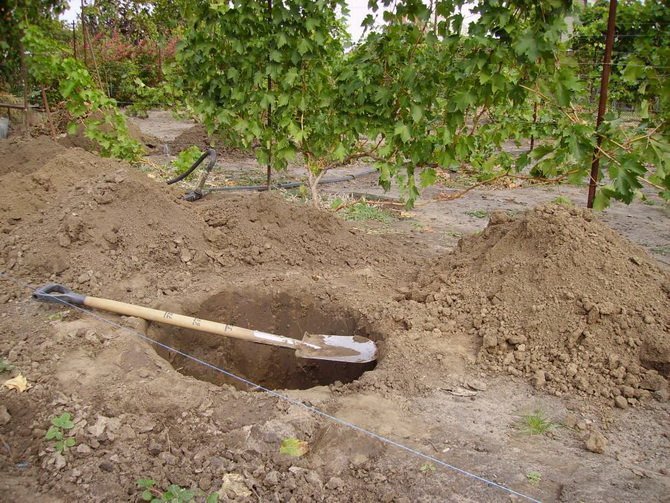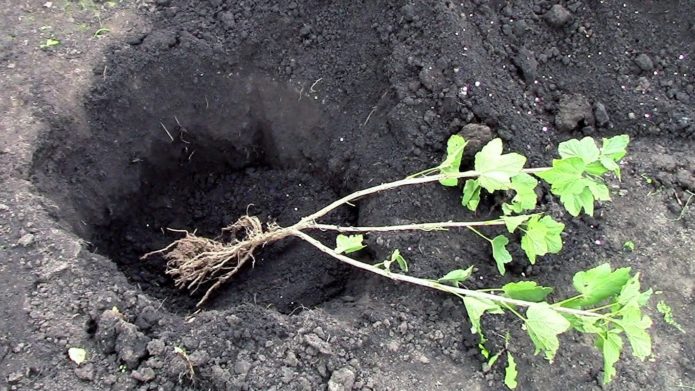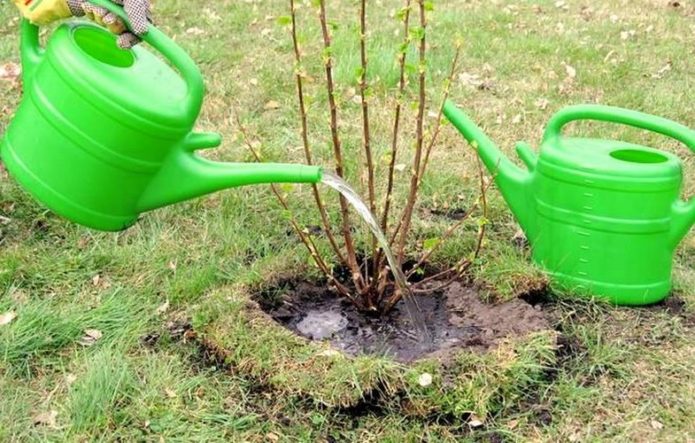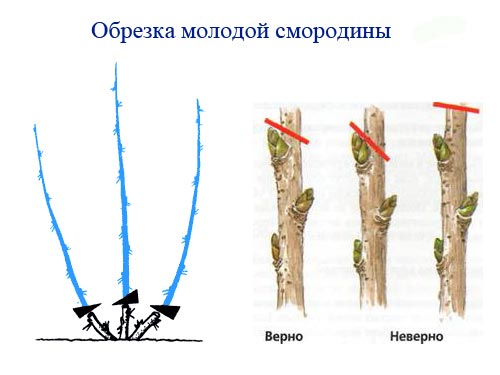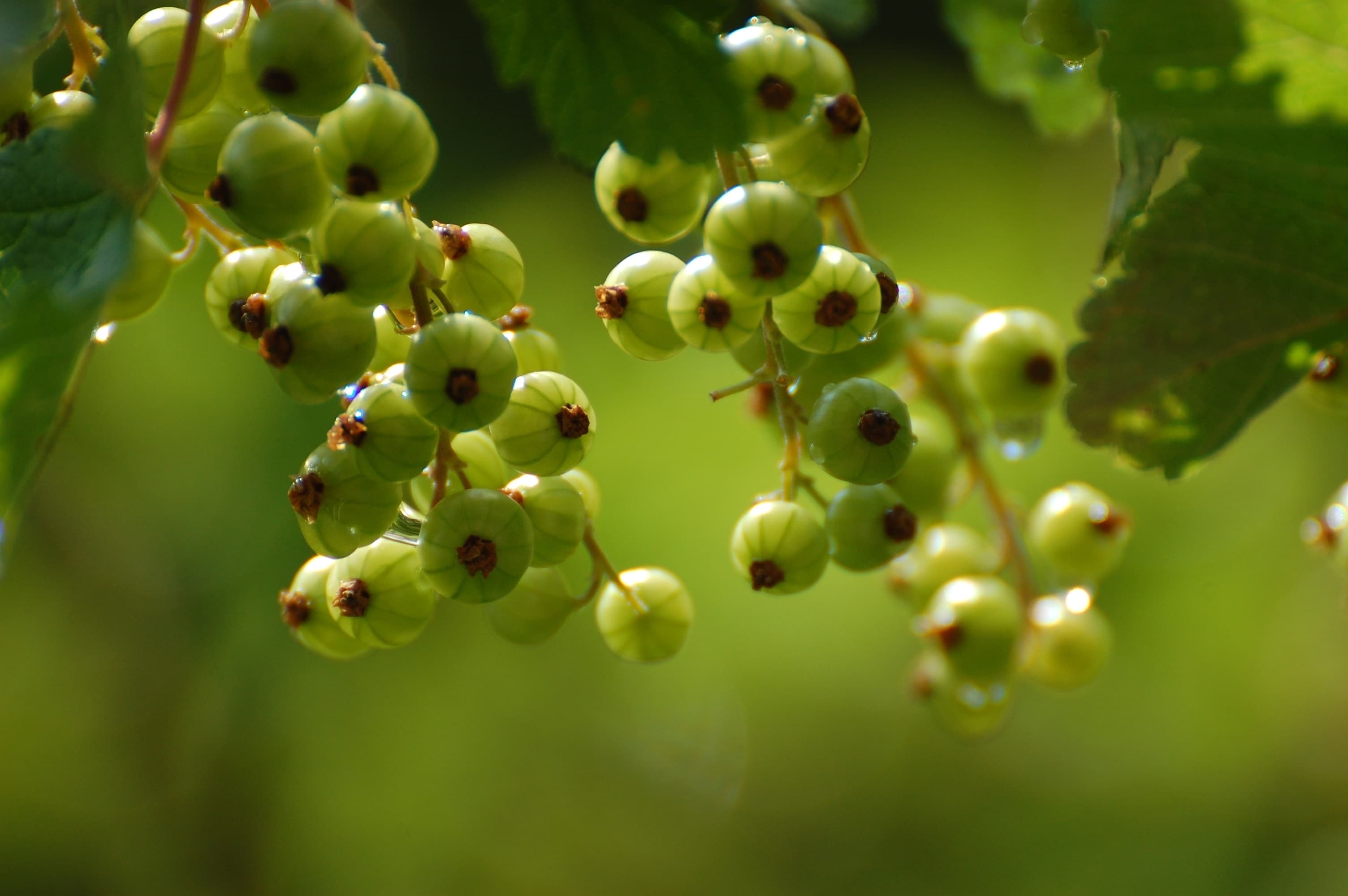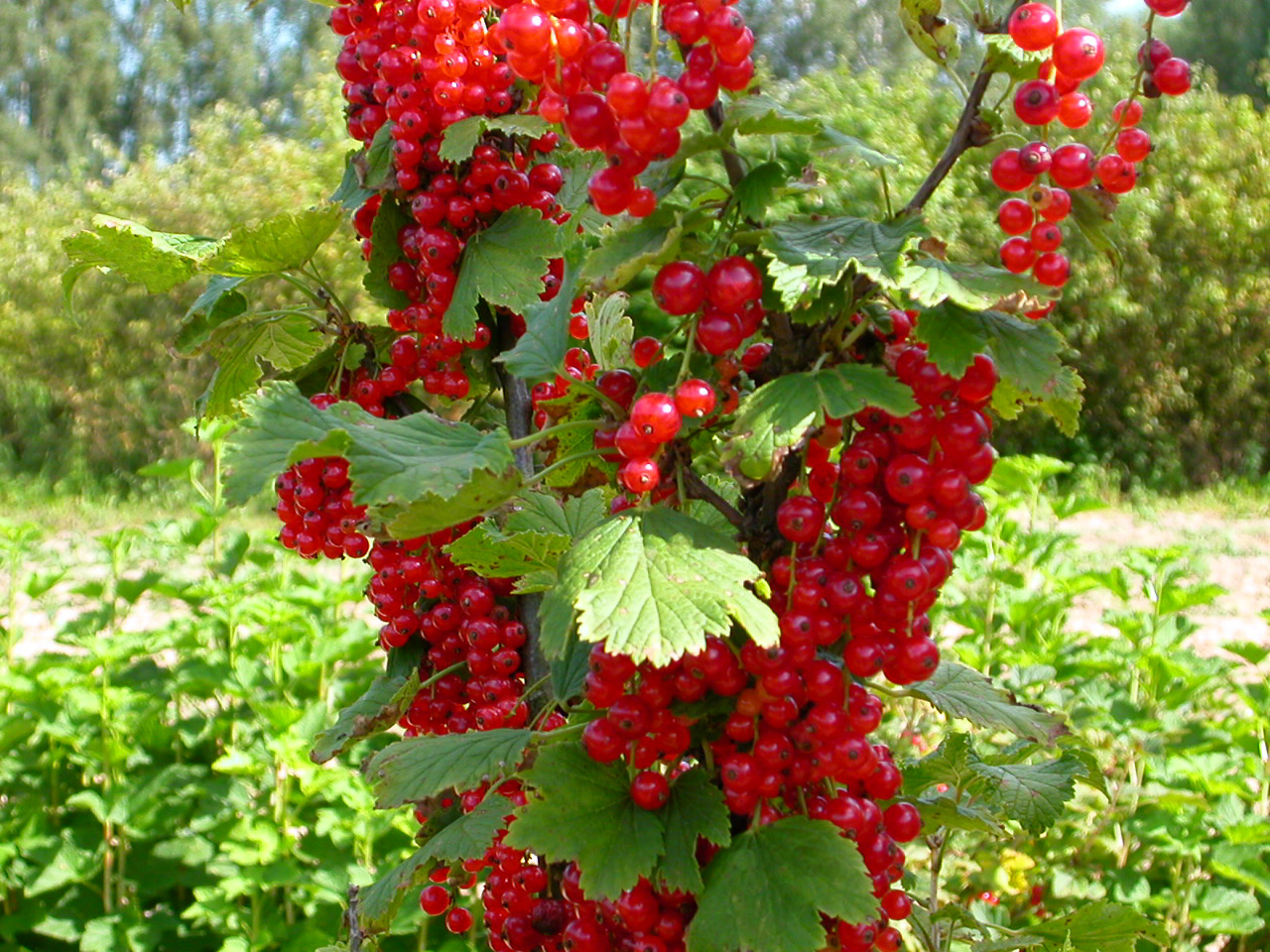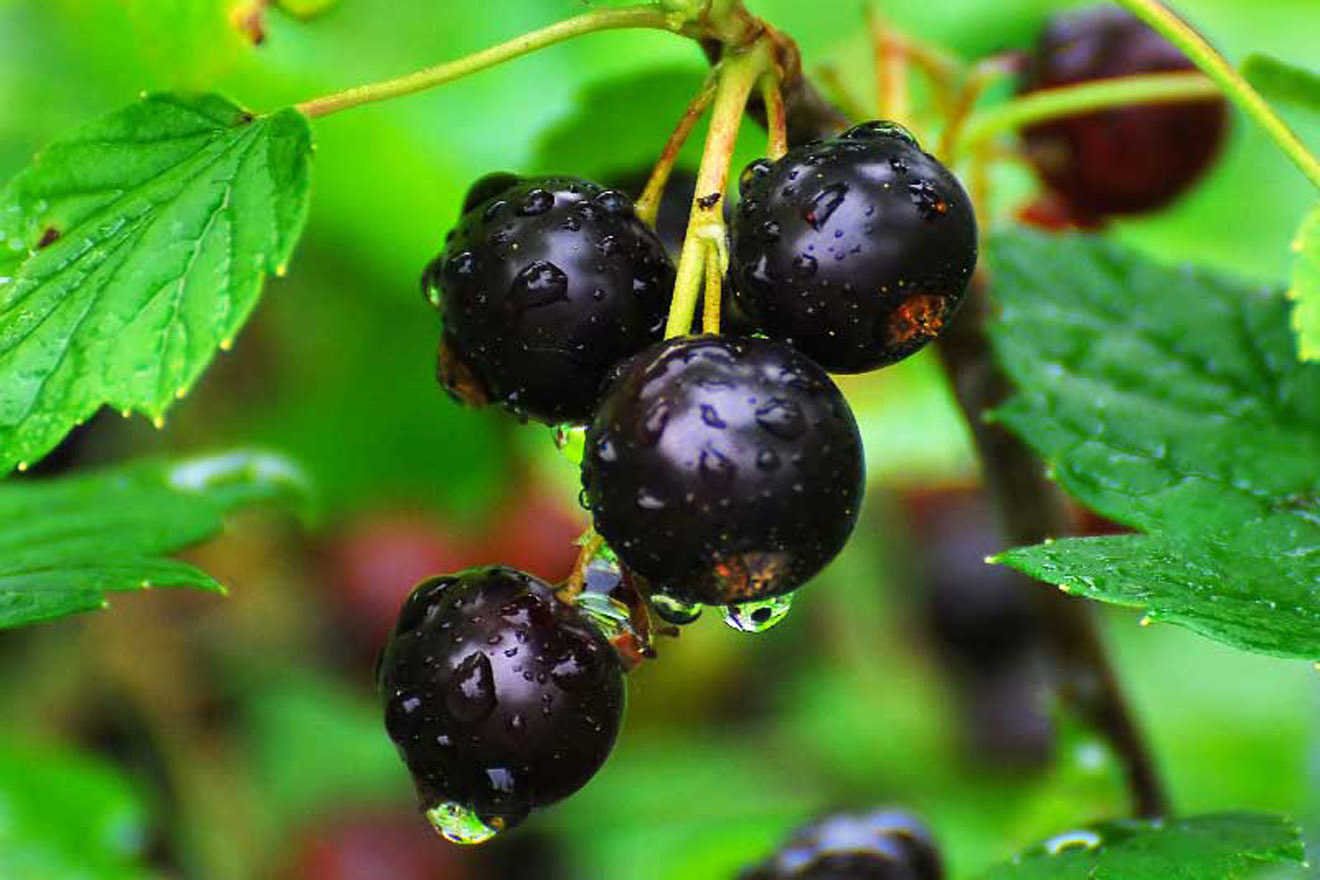Currants are rightfully called the queen of the garden. It is popular and loved by many gardeners for its unpretentiousness, early maturity, and resistance to the vagaries of the weather. But the available variety does not always suit the owners with its taste and ripening times. In this case, the fastest and most reliable way to update currant plantings, increase their yield, extend the harvest time of valuable and useful berries is to plant currant seedlings of the species and varieties that suit you.
Content
How to choose and save currant seedlings
If you treat the choice of seedlings of this culture responsibly, then currant bushes will grow on your site, supply a vitamin berry to your table for more than one year. It is better to buy seedlings in a nursery, garden center with positive reviews or from trusted sellers, because here you will receive full information about the characteristics of the variety, ripening times, taste and requirements for planting and caring for the crop.
Currant seedlings can be sold with open or closed root systems. The latter, sold in pots, containers or bags of soil, are slightly more expensive, but they tolerate transportation and replanting better.
When choosing a seedling with unprotected roots, you need to pay attention to the following signs:
- the state of the root system. A viable seedling will have 3 to 5 well-developed lignified skeletal roots 15 cm long without breakage or damage. The presence of adventitious fibrous roots is important. In addition, the root system should not be dried out, ideally if it is in a chatterbox or slightly damp;
- condition of the aboveground part. She may have one or several flexible, even shoots up to 40 cm long. Height does not play a significant role here, because they will need to be shortened when planting. But you should ask the seller to make a cut on the shoot. If the seedling is infected with such a dangerous disease as glass, then blackness will be visible on the cut. Pay attention to the buds of the seedling. They should not be oversized. Swollen buds signal a kidney mite infection of the currant.
Description of signs of damage to currants by a kidney mite:https://flowers.bigbadmole.com/en/yagody/smorodina/pochkovyy-kleshch-na-smorodine-mery-borby-vesnoy.html
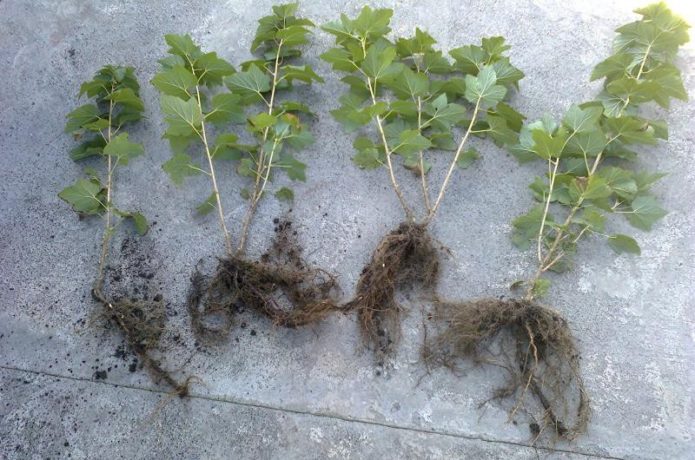
The roots of the seedlings should be moderately long, without damage, with a large number of fibrous roots
All these signs are valid not only for black, but also for other types of currants. By the way, it is very easy to distinguish a black currant seedling from a white or red one. You need to lightly rub the twig: black will give off a characteristic smell, white and red will not.
Having bought a seedling, you should take care to deliver it to the planting site safe and sound. The unprotected roots of the seedling are best wrapped in a damp cloth and placed in a plastic bag. This protection will prevent the root system from drying out. After transportation, the shelter is removed and the bush is carefully examined:
- if you find damaged tips of roots or shoots, then they should be cut to a healthy part;
- if planting is planned after a while, then it is best to dig the seedling into the ground;
- you can dip the roots in a clay mash. This will prevent them from drying out.
You cannot leave an unprotected seedling in direct sunlight, which will quickly dry out the fibrous roots and the bush will not take root well.
Planting seedlings of black, red and white currants in the fall in open ground
Autumn planting of currants - the most rational option for replenishing the garden plot with this berry shrub. During the winter, the soil under the planted bush will settle and compact, and as soon as the warm days come, the currants will start to grow actively. Experienced gardeners claim that it is during autumn planting that currants show a high survival rate.
Choosing a landing site
The currant bush grows well and bears fruit with enough light. Black currant also tolerates a little shading, so it can be placed near buildings and fences that protect the plant from cold winds, contribute to the retention of snow in winter, which can protect the roots from freezing. In shade, the bushes will grow taller, less spreading.
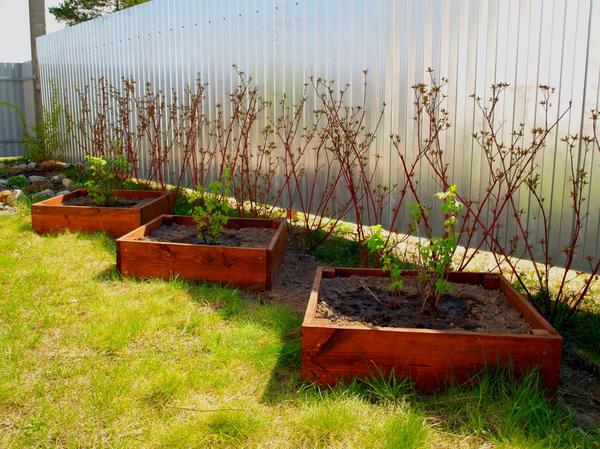
When planting currants near the fence, you need to understand that after a few years they will grow, and provide for the possibility of picking berries from all sides
Red and white currants require more open, sunny places for good fruiting and ripening.
You should not choose a site for planting currants near large fruit trees, overgrown raspberries. They will create an abundant shade, draw nutrients from the soil with their powerful root system. The planting next to the gooseberry bushes also adversely affects the currants, since these crops are attacked by the same pests and have common diseases. The berry grows well with any vegetables, as well as strawberries and honeysuckle.
Almost any soil is suitable for planting currants, but it is better if it is fertile and cultivated, has neutral or close acidity. The culture loves moisture, but areas with high-lying groundwater, swampy soil should not be chosen, since high constant humidity can provoke rotting of the root system, and this will certainly lead to the death of the bush. A preventive measure when planting a currant seedling in a low place is drainage: the construction of grooves around the currant plantings, stony-sandy layers in the soil. They will allow you to maintain an optimal water balance in the soil.
Red currants and their varieties are drought-resistant plants, so higher places are suitable for them.
Differences in spring and autumn planting of red currants:https://flowers.bigbadmole.com/en/yagody/smorodina/posadka-krasnoy-smorodiny.html
Soil preparation
The best option for preliminary soil preparation would be planting green manure plants (lupine, clover, oil radish, oats) on the site for the future currant. Even before the beginning of flowering, these herbs are embedded in the soil and thus heal it, make it more fertile. Also, the following preparatory work must be carried out on the site:
- the site should be leveled, mounds and depressions should be removed;
- dig up the soil, removing weeds and their roots;
- prepare the landing pit. It should be about 40x40x40 cm in size.Bad soil from the bottom of the pit is thrown away, and the fertile top layer is returned back, after mixing it with the following fertilizers: 1 bucket of organic matter (compost, manure or humus), superphosphate (200 g), wood ash (1 glass).
It is best to carry out these procedures in advance, about 3 weeks before planting, so that the soil has time to settle.
Landing time and scheme
The optimal time for autumn planting of currants is mid-autumn, before the onset of frost. In central Russia, this is usually done in the first decade of October, in the northern regions from the second half of September, and in the southern regions, currant seedlings can be planted at the end of October. Compliance with the indicated deadlines is a guarantee that the plant will restore the root system before the onset of cold weather, firmly settle in the ground.
When planting several blackcurrant seedlings, it must be borne in mind that over time the bushes will grow, become spreading, so the distance between them should be 1.5–2 meters. This distance will allow the currants to eat well and get enough light.
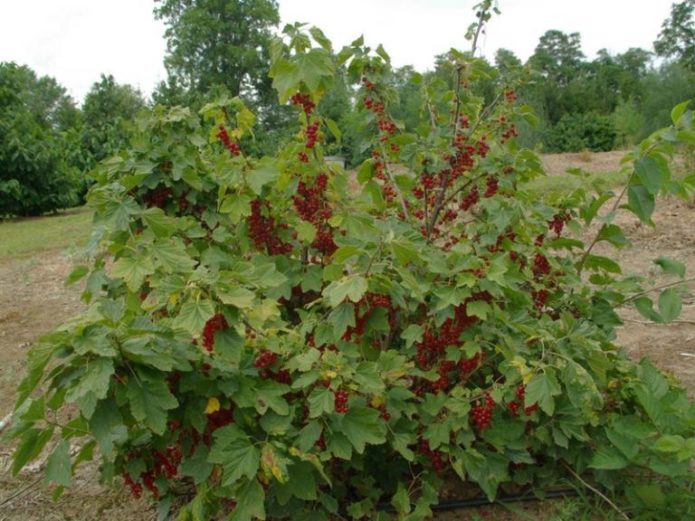
The main rule when placing bushes on a site is simple: you need to plant so that the plant is comfortable, and at the same time it is convenient to pick berries
The distance between bushes of other types of currants (red, golden) may be slightly less, since the bushes of these varieties are more compact, not spreading.
Planting technology of currant seedlings
The process of planting currant seedlings is as follows:
- The planting hole prepared in advance is spilled with water.
- At its bottom, a small mound is formed, on which the seedling is placed at an angle of about 45 degrees. With inclined planting, the root system of the seedling will form more intensively.
- The root collar is buried by about 7 cm. In the spring, new shoots will appear from the buds buried in the ground, the bush will turn out to be more powerful, spreading.
- The roots are carefully straightened and distributed over the earthen mound.
- The pit is gradually covered with earth dug out during the preparation of the hole and mixed with compost.
- It is recommended to simultaneously spill the soil with water so that the soil fills all voids. For the same purpose, you can slightly shake the seedling.
- The ground around the planted plant is carefully tamped.
- Final watering is carried out (at least 20 liters under the bush).
- The seedling is pruned at a height of 10-15 cm from the ground, leaving no more than 5-6 buds.
The planted currant bush does not require special care. In dry weather, it is watered several times, and the trunk circle is mulched with peat or humus, thus protecting the root system from the cold.
Video: autumn planting of currants
Planting currant seedlings in the spring in open ground
Planting currant seedlings can be carried out not only in autumn, but also in spring. Spring planting has its advantages:
- the rooting and development of the seedling occurs at a favorable time, when the root system is fully provided with the necessary amount of nutrients, due to which the rapid growth of the ground part begins;
- there is no danger of frost damage to the young bush. Before the beginning of winter, he will be able to fully root, build up a powerful root system.
The difficulty of planting in spring is in choosing the right timing, which depends on weather conditions. Most often, a favorable time comes in April, when the earth warms up, the danger of strong return frosts, which can damage the upper buds of the seedling, passes.The air temperature during the day should be about +10 degrees, and at night - +5 degrees. At the same time, you can not be late with this event, because planting must be carried out before budding begins. Later dates will lead to rapid growth of the aerial part of the plant, because currant buds bloom very early. Insufficiently strong roots will not have enough strength for its full nutrition, so the defenses of the currant will be reduced.
In the northern regions and in the Urals, spring planting is carried out most often in May, after the soil warms up to a depth of at least 20 cm.If planting is carried out in these areas earlier, the rhizomes will freeze and the currant plantings will die.
The technology of spring planting of currants is no different from the autumn, but further care includes the following activities:
- frequent watering, which will help the young plant to harden in the ground. This will be signaled by young green leaves emerging from the buds;
- obligatory loosening of the near-trunk circle after each watering to prevent the formation of a dense earth crust;
- control of weeds, which shade a short currant bush, absorb large amounts of water and nutrients from the soil.
Good root growth, the development of lateral buds during spring planting of currants will be facilitated by strong pruning of the aboveground part of the seedling. It is shortened to a height of 15–20 cm, leaving 3–4 green buds.
Simple ways of breeding currants at their summer cottage:https://flowers.bigbadmole.com/en/yagody/smorodina/kak-razmnozhit-smorodinu.html
Features of planting a seedling with a closed root system
For spring planting, it is preferable to choose seedlings with a closed root system. In this case, the timing of planting does not play a significant role, such plants can be planted even with green leaves. The planting process is similar to planting a bush with open roots. The only difficulty is carefully removing the seedling from the container without damaging the earthen ball:
- the seedling in a disposable container can be immediately placed in the planting pit, cut and then removed the wall material;
- a seedling in a pot must first be watered so that the earthen lump is shaken out of the pot without scattering.
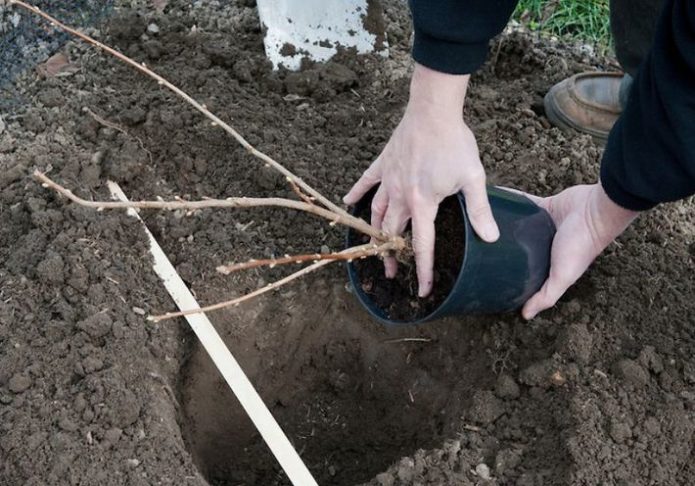
The earthen clod of the seedling is already fertilized soil, so the amount of fertilizer applied to the pit can be slightly reduced
Video: features of planting black currants in spring
If, when choosing and planting currant seedlings, you act exactly according to the instructions, then the shrub will definitely take root, take root well, and grow green mass, regardless of when the planting was carried out - in spring or autumn.
